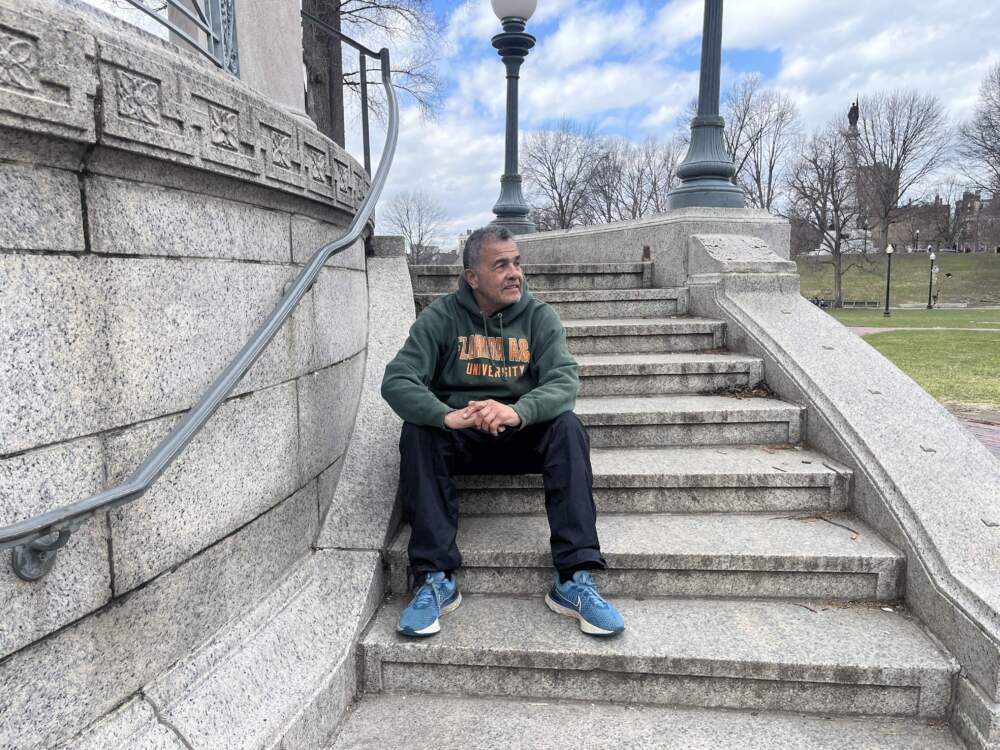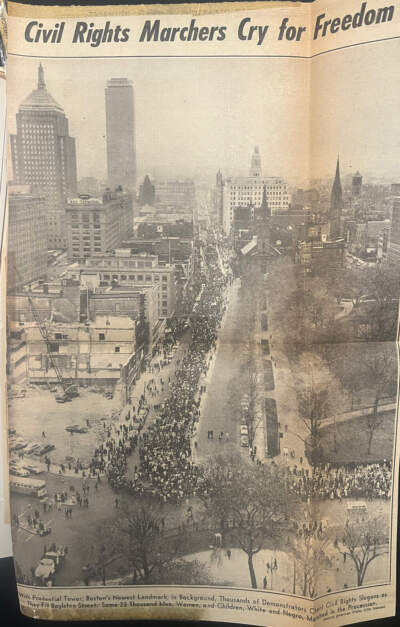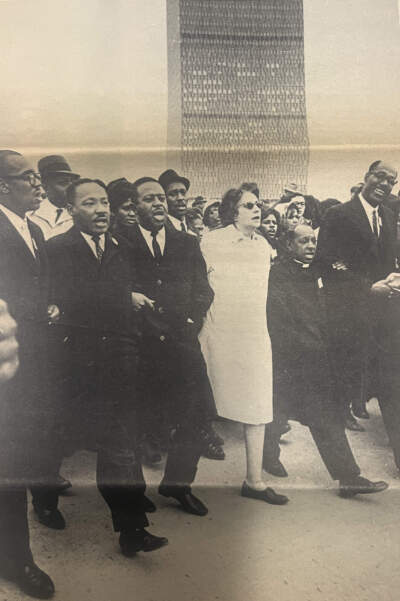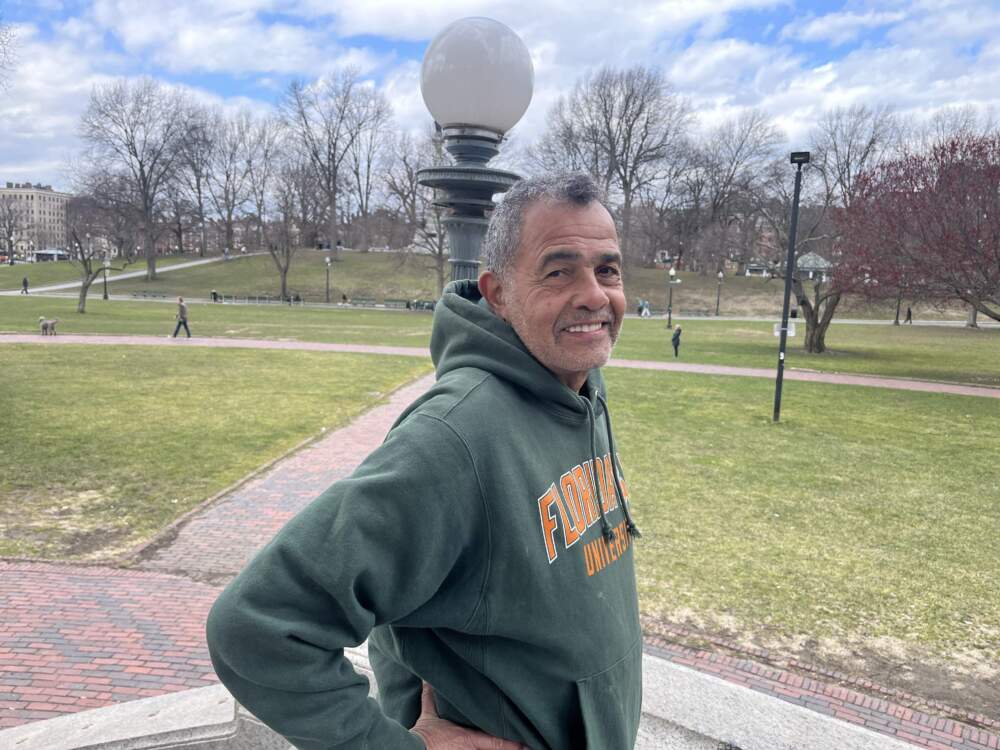My grandfather, Wayne Lucas, is a proud native Bostonian. He grew up predominantly in foster houses in Roxbury and Dorchester and spent a superb chunk of his youth in a home on Pasadena Highway, proper off of Blue Hill Avenue. As a teen, he was an everyday participant in Freedom Home’s applications for youth — the longtime Roxbury/Dorchester group that focuses on neighborhood uplift and the event of Black and brown kids.
It was by Freedom Home that he discovered Martin Luther King, Jr. was coming to city in April of 1965. As a vibrant 15-year-old, he’d heard of King and his push for racial equality. Nonetheless, King wasn’t simply coming again to the town the place he’d lived as a Boston College doctoral pupil for a easy go to — he was coming to guide a large march and rally.
That occasion turned often known as the Freedom March and Rally. Many college students on the time, like my grandfather, received concerned with the march by locations like Freedom Home.

“The Civil Rights motion was in full pressure,” my grandfather recollects. “It filtered right down to the youthful individuals. In our space, within the faculties… we did not have all the correct books. We most likely did not have the very best academics. The amenities weren’t that nice. It was affecting the Black kids in Boston.”
On the time, Boston residents in areas like Roxbury and Dorchester had been protesting segregation in public faculties, lack of inexpensive housing and revenue inequality. Louise Day Hicks, then the chair of the Boston College Committee, had declared Boston’s faculties weren’t segregated, though findings by the Advisory Committee on Racial Imbalance and Schooling (appointed by the Massachusetts Board of Schooling) concluded that they had been. So-called “city renewal” applications that allowed the town to buy non-public property for the sake of “revitalization,” had been in full swing however the end result was the displacement of low-income residents. Neighborhood members pushed metropolis officers to incorporate decrease revenue Bostonians in anti-poverty planning.
The day of the rally, my grandfather walked for about 10 minutes from his junior highschool to Freedom Home, the place he met up with many different college students. They’d had a full day of faculty. The day was chilly and dreary however that did not maintain them from feeling energized for the march and rally.
“You have to notice again then most all people wore sneakers, not sneakers,” he says. The potential of an uncomfortable lengthy stroll did not deter him or his associates. “If you’re 14, 15, 16 years previous, it would not make a distinction. We had been simply excited for what was taking place.”

Carter Playground in Roxbury was the key assembly level for these taking part within the march and rally. My grandfather would not bear in mind in the event that they walked to the playground or took one of many many buses supplied, however he does bear in mind marching down Columbus Avenue. “ Some individuals had indicators, we most likely did some rally chants,” he says. “If I bear in mind, I believe there have been perhaps 15,000 individuals marching right down to the Frequent.”
Martin Luther King Jr. speaks
Native leaders like Ruth Batson from the Massachusetts Fee Towards Discrimination and Alan Gartner of the Boston Congress for Racial Fairness addressed the gang of hundreds on the Parkman Bandstand on the Boston Frequent. Then, King took the stage. My grandfather watched all the things unfold from the hillside.
“The passion was very excessive to listen to and to see Martin Luther King,” he says. “Not too many individuals, I am positive even my technology, might say they’ve seen Dr. King.”
King acknowledged the variations between northern and southern racism when he addressed the gang. “It will be demagogic and dishonest for me to say that Boston is a Birmingham or to equate Massachusetts with Mississippi,” he stated.
Though racism operated otherwise, it was nonetheless rampant in Boston in ways in which negatively impacted individuals of colour.
“ It will be morally irresponsible,” King continued, “had been I to stay blind to the risk to liberty, the denial of alternative and the crippling poverty that we face in some sections of this neighborhood.”
There was a prevailing nationwide misperception that northern cities like Boston had been extra “progressive” than different components of the nation. Locals knew that the truth was totally different.
King and different audio system emphasised a number of main issues in Boston that included segregation in public faculties, the influence of “city renewal” on inexpensive housing and revenue inequality and poverty. “I am right here to hitch with you in reminding the cradle of liberty that America has by no means fulfilled the Democratic imaginative and prescient,” stated King.
The aftermath of the Freedom March and Rally

My grandfather talked about that a number of of his associates weren’t allowed to attend the march and rally due to the concern of potential violence. However the rally remained peaceable and as soon as it was over, my grandfather returned residence on the MBTA, surrounded by others who had been additionally in attendance. “ All of us had been speaking that, you already know, perhaps that is going to be the start of one thing new in Boston,” my grandfather recollects.
As a teen, it was laborious for him inform if there have been the makings of one thing “new in Boston.” However he does recall working a race in South Boston a number of months after the march and rally. He was a observe star and on this explicit race, he was successful. “However alongside the course of the race, I used to be being known as the ‘n phrase’,” my grandfather remembers. “Folks had been saying ‘What’s that ‘n phrase’ doing on the entrance of the race?'”
Boston, little doubt, nonetheless had its points. A couple of decade after the 1965 march, the Boston bussing disaster broke out. Gentrification continued to brush neighborhoods just like the South Finish and Jamaica Plain and relations between the Boston Police Division and communities of colour worsened, significantly within the Nineteen Eighties and Nineties.
Change takes time, says Imari Paris Jeffries, president and CEO of Embrace Boston, the group behind the King memorial within the Boston Frequent.
“We, as individuals of colour, as Black people on this metropolis have needed to combat for issues. We have been nervous and never trusting round techniques, from Charles Stuart to redlining. To construct that belief goes to take a while.” However the optimism continues to be there. “ The chance for placemaking for individuals of colour has modified. We have seen some enhancements underneath the final 4 or 5 years,” he says.
On April 26, Embrace Boston is main a commemoration of the sixtieth anniversary of the 1965 rally that features a mini-march and rally. “It’s an activation that’s related within the second in honor of these ancestors who began this work,” says Jeffries. “It is an intersection of celebrating the Freedom Rally and guaranteeing that Boston, as a metropolis of firsts, additionally commemorates this rally.”
With the occasion, the group intends to deliver a few of the points nonetheless impacting Boston to the forefront whereas offering sources for residents to get civically concerned. Jeffries hopes to encourage youth who, like my grandfather was in 1965, are searching for a method to make a distinction on the planet they stay in.
“I really feel a way of pleasure and satisfaction to have participated in that rally,” my grandfather says. “ That was the start of my political consciousness. We now have to alter the system, the present system. We are able to all take an element in it.”


